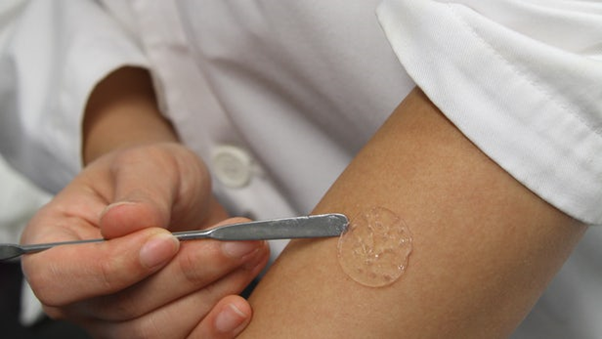Author: Shubhanka A C
The treatment of skin wounds is an important research area due to their physiological importance. Researchers from Singapore’s Institute of Bioengineering and Nanotechnology (IBN) have developed ‘nanogels’ which heal wounds faster than the normal dressings and medicines which comparatively reduce the risks of any infections and rapid treatment could be given.
Nanogels are made up of biopolymers such as short sequenced amino acids which can assemble themselves to form nanofibers or gels that are crosslinked to each other. These nanogels become fibrous gel when water is added to them. They are created using the institute’s own ultra short peptide technology which are non-toxic and non-immunogenic in nature. Nanogels are mostly porous and moist in nature. In clinics the currently used silicone-based dressing often do not completely heal the wound and leave little space for new skin cells to grow and develop. Recovery using standard wound treatment could take between 2 to 10 weeks and leads to more infections. Hence one of the properties of the nanogels is that it helps in providing pathways for regeneration of new skin cells and healing of the wounds. The IBN team of researchers say that the nanogel technology can heal even the second and third degree burn wounds quicker than the silicone-based dressings.
The recovery can take between 2 to 10 weeks with standard treatment, in animal studies conducted by the team close to 100 percent wound closure was achieved in two weeks, whereas in the standard silicone dressing only 63 percent of the wound was healed even though it took a long time. Results of these tests have been published in the journals of Biomaterials.
“Ultimately, we hope to develop a gel that can incorporate bioactive agents to further enhance skin regeneration. Our peptides could also be used to develop synthetic skin substitutes for deeper burns” said Dr Hauser IBN team.

Photo: Institute of Bioengineering and nanotechnology
If commercialized, IBN’s new hydrogels could be manufactured as a membrane patch, topical gel or spray. The research team is also looking into a dry-powder formulation, in which the gel can be activated by just adding water. Such a product would have a longer shelf-life and could be included in first aid kits for wound care therapy. Nanotechnology today offers the means to overcome the dimensional barrier of currently used therapies for wounds and ulcers, to reach a dysfunctional molecular target and exert the therapeutic action straight at the origin of the chronic condition.
As nanogels are one of the recent inventions there are other developments in nanotechnology which are featured to make the treatment of wounds better. For example, nanoparticles made of silver, gold and copper make a very effective therapeutic treatment on wounds and scars. Due to their specific characteristics, nanoparticles such as Nano capsules, solid lipid nanoparticles, and polymeric nanocomplexes are ideal pathways to improve the effect of drugs (antibiotics, growth factors, etc.) aimed at wound healing. These discoveries are the source for the future medicines and its further scope.
Here are some of the innovative and new developments under nanotechnology:
- Nanodevices such as nanoparticles can move inside the cytoplasmic spaces and cellular pathways.
- Nanoparticles help in modulation of drugs biocompatibility and safety through Nano delivery systems.
- As mentioned, infections can prevail through the wounds. Thus, the latest generation antibiotics vancomycin is the most useful for fighting against these bacterial infections. So, the several antibiotics are vancomycin-modified nanoparticles to enhance the pharmacodynamics of the antibiotic molecule.
- Nanocarriers possess an enormous potential, as nanoparticles-based delivery systems can be highly beneficial to augment the therapeutic power of biological and synthetic molecules.
Web sources:
http://trends.medicalexpo.com/project-45853.html
https://www.meddeviceonline.com/doc/novel-nanogel-could-heal-serious-burn-wounds-0001
https://newatlas.com/burn-wound-healing-nanogel-ibn/3211
https://www.ncbi.nlm.nih.gov/pubmed/26323420
https://www.asianscientist.com/2015/06/print/10-asian-biotech-innovations-watch-2015/
About Author / Additional Info: